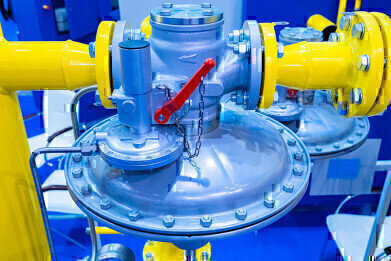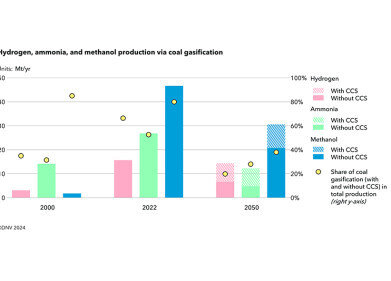Green Energy
The motivation for methanation has been eroded by good science
Nov 11 2022
Author credit – Stephen B. Harrison, sbh4 consulting
Carbon dioxide (CO2) and hydrogen can be converted to methane and water by the Sabatier reaction. Methanation has been used to generate e-methane from green hydrogen. Is this a sustainable pathway to utilise green hydrogen and CO2 to generate a clean energy vector?
Most of the hydrogen produced today is derived from methane as natural gas. Given this situation, what motivation can there be to convert the hydrogen back to methane with the resultant chemical conversion energy losses?
e-Methane was perceived to be attractive until the rise of green hydrogen
Some years ago, the were concerns about blending hydrogen into natural gas transmission and distribution pipeline networks. These were driven by several factors such as the risk of embrittlement of steel pipelines. Metering and fair invoicing was also a concern. Regulatory hurdles were also in place that prevented high levels of admixing.
Research into hydrogen admixing into natural gas pipelines has been a major focus for transmission system operators (TSOs) and distribution system operators (DSOs) in the past decade. The conclusion that has clearly emerged is that hydrogen can indeed be safely blended into many natural gas pipeline systems under appropriate conditions. This finding has reduced the imperative to convert hydrogen to methane to enable its transportation to consumers.
Hydrogen has a slightly lower volumetric energy value than methane. This means that substituting methane for hydrogen results in the meter indicating that more energy has been delivered than is the case. It was perceived that changes in the metering equipment would have a prohibitive cost burden. Advances in metering technology for hydrogen / methane gas blends and an appreciation of the scale of mass-production that will be required has driven down the anticipated cost of switching out the metering equipment.
The potential cost of changes in consumer equipment such as gas cookers or central heating boilers were also raised as a potential barrier to hydrogen blending into natural gas. Tests in this area have also established that up to 30% of hydrogen in the gas mixture by volume can flow through existing equipment without the need for modification. Since most systems are starting from a very low level of hydrogen blending, it will take some time until the 30% cap is reached. The concern that was raised has been robustly tested and suitable limits have been understood.
e-Methane is unlikely to become a major CO2 utilisation application
From a greenhouse gas emissions perspective, an exclusive focus on ‘decarbonisation’ would drive a shift from fossil methane to e-methane generated from green hydrogen and recovered CO2. However, climate scientists have accurately reminded us that methane, is also a potent greenhouse gas and a holistic approach to greenhouse gas emissions reduction is required in addition to the foundation of ‘decarbonisation’.
The conversion of hydrogen as a premium energy vector into e-methane would seem to be an unnecessary additional step. It is wasteful in energy and increases the risk of methane greenhouse gas emissions and therefore poses an additional risk to climate change. Direct utilisation and distribution of hydrogen must surely be the way forward.
Events
May 05 2024 Seville, Spain
May 13 2024 Munich, Germany
May 23 2024 Beijing, China
May 23 2024 Beijing, China
Jun 10 2024 Algiers, Algeria














